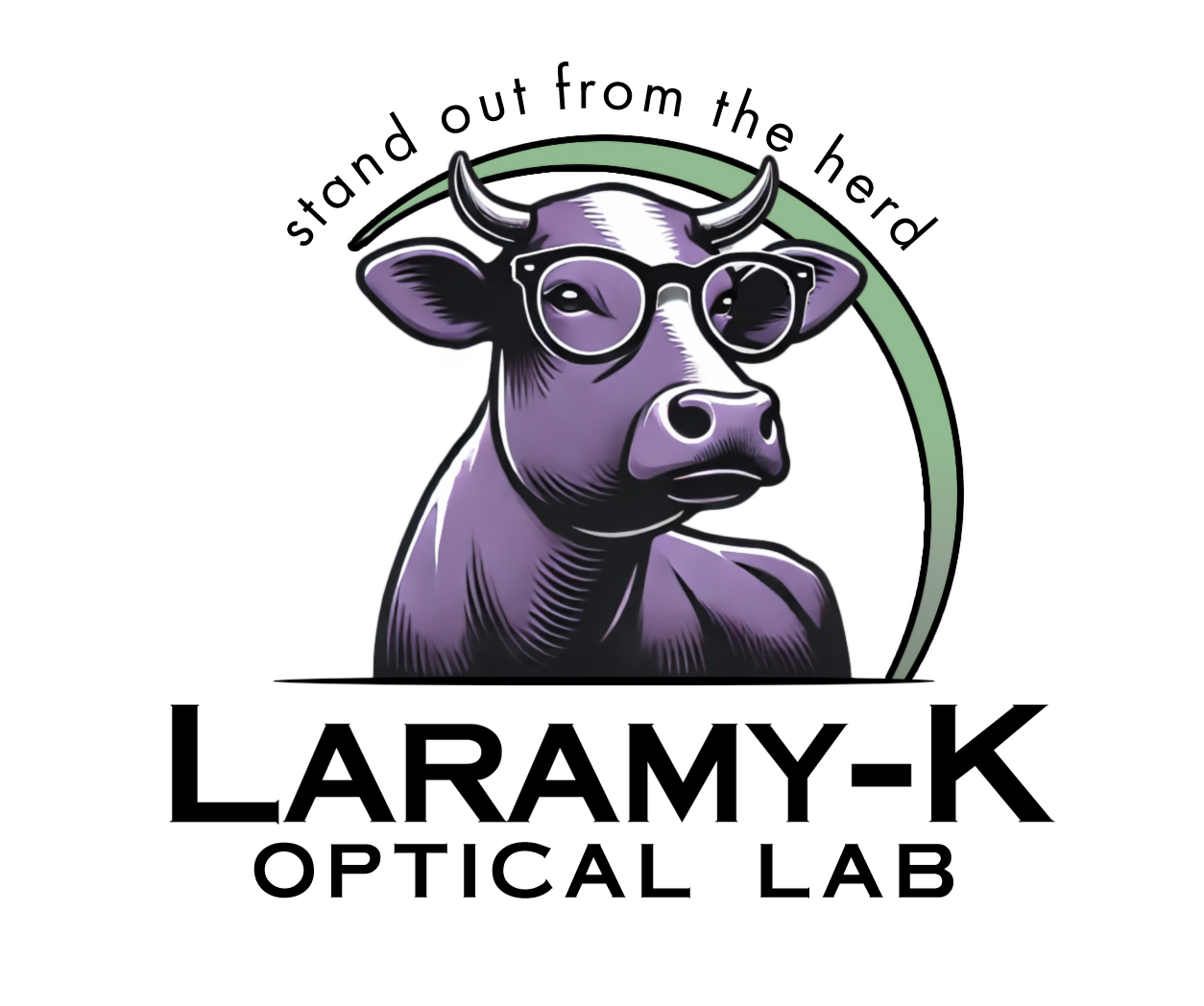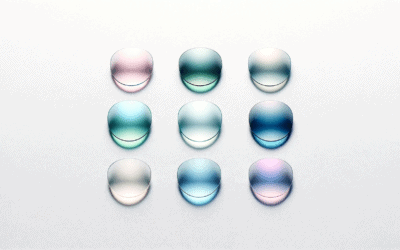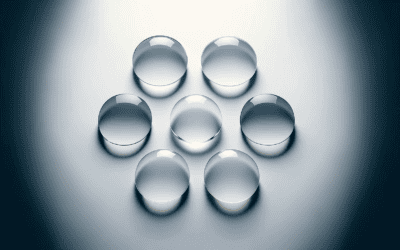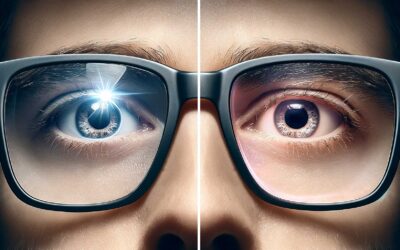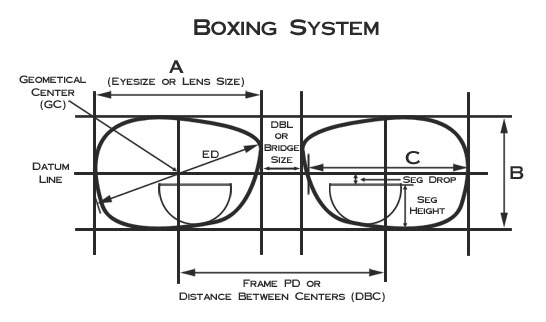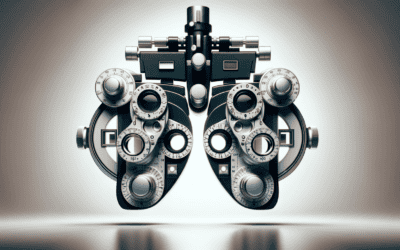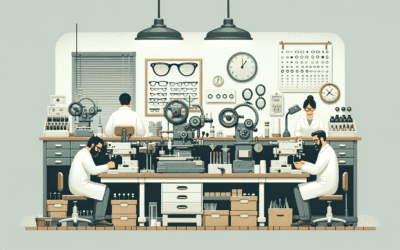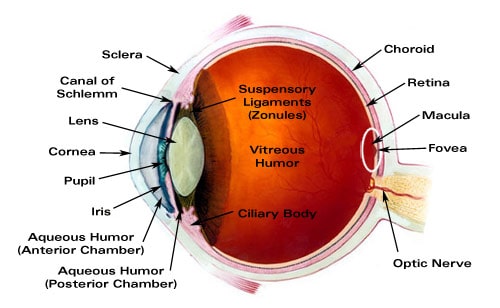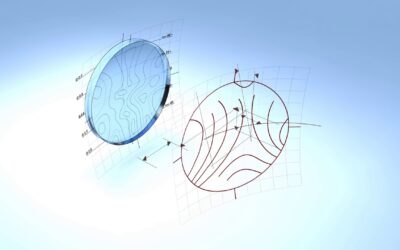Optical Education Library
Photochromic Lenses
How Do Photochromic Lenses Work? Photochromic lenses are a marvel of modern eyewear technology providing a blend of functionality and convenience. These innovative lenses effortlessly "transition" from clear to tinted upon exposure to ultraviolet light, offering the...
What Is A Progressive Lens?
Who Needs Progressive Lenses? Eventually everyone loses the ability to focus on things up close. That near focus ability is know as accommodation. The newspaper becomes more difficult to focus or the fine print on the restaurant menu isn't quite as sharp. They will...
Lens Coatings & Treatments: Enhancing Vision and Function
Lens Coatings & Treatments: Enhancing Vision and Function All optical materials, no matter how advanced or well-suited for a patient's needs, suffer from innate shortcomings specific to the lenses chemical makeup. Where crown glass is unquestionably...
What Are Polarized Lenses?
What do Polarized Lenses do? Photographers often use polarized lenses on their cameras to obtain bolder colors and deeper contrast in their photos. In the same way polarized lenses remove the glare and improve the visual quality of a photograph, polarized ophthalmic...
Basic Lens Styles and Types
In the realm of vision correction, eyeglass lenses are not one-size-fits-all. To cater to the diverse visual needs of individuals, lenses are available in various types such as single vision, bifocal, trifocal, progressive, freeform progressive, and more. Each type is...
How to Choose Lens Material
The Importance of Selecting the Right Lens Material When it comes to the perfect pair of eyeglasses, an important factors can be selecting the right lens material. This choice is not just about aesthetics; it can influence comfort, durability, vision quality, and even...
Trivex vs. Polycarbonate
Poly and Trivex Lenses: Facts and Fiction Even though Trivex has been available for years and polycarbonate for decades, there is still much debate, confusion and even long-held myths about how Trivex and polycarbonate stack up against one another in the world...
What is an AR (Anti-Reflective) Coating?
What is an AR (Anti-Reflective) Coating? An Anti-Reflective (AR) coating, also known as anti-glare coating, is a thin multilayer finish applied to the surface of eyeglass lenses. This coating is designed to reduce the amount of surface glare that reflects off the...
Video: Lens Material Drop Tests
The following videos show the results of drop tests perfomed by Younger Optics on CR-39, Spectralite, 1.60, Polycarbonate, and Trivex. All tests were perfomed using a 500g missile with a 1 mm point. The lenses tested were all front-side coated with a center thickness...
The Problem with UV 400 Treatments
Have you ever had the chance and check a pair of lenses that were treated with a UV solution some three to six month after the were made and handed to the patient? There is a good chance, that you will have a big surprise, your UV Meter ( if the instrument measures at...
The Dangers of Yellow Night Driving Glasses
Summary While there is a new lens coating that seems to reduce glare and enhance color saturation for night-time driving in both young an old, research has shown that yellow-tinted glasses provide no help against glare common in night-driving scenarios. In fact,...
Boxing System of Eyeglass Frame Measurement
Understanding Eyeglass Measurements: The Boxing System In 1962 the Optical Manufacturers Association adopted the boxing system to provide a standard for eyeglass frame and lens measurement that greatly improved upon the accuracy of previous systems. The boxing...
Transposing Prescriptions
Visit OpticianWorks.com for the more content like this and the best comprehensive optician, ABO, and NCLE study programs available online. What does it mean to transpose an eyeglass prescription? Depending on the equipment used by the doctor, a prescription may be in...
Harry A. Saake’s 44 Tips for Dispensing Opticians
1. If you have a high plus lens, stay away from long narrow frames as they will tend to pop out of those frames the easiest since they are long across the top. One must understand that one of the reasons for having trouble keeping lenses in a metal frame is the...
Free Optician Training, ABO Study Guide, AND Review Quizzes
How does Laramy-K's world class optician training program give you the edge?More than ABOOpticianWorks was not created as merely another me-too, pass the ABO, quickie study program, but was built with a specific purpose in mind. This is why our Ultimate ABO Study...
The Electromagnetic Spectrum and Vision
What is Electromagnetic Radiation? Produced by the nuclear cauldrons of stars and all matter in the cosmos, energy in the form of electromagnetic radiation permeates our entire universe. Every second of every day we are bombarded with and surrounded by electromagnetic...
Understanding Sphere, Cylinder, and Axis in the Eyeglass Lens Prescription
What Are Sphere, Cylinder, Axis, and Add Power in an Eyeglass Lens Prescription? Sphere: The Basis of Your Prescription The sphere component of a prescription indicates the degree of nearsightedness or farsightedness. It's expressed in diopters and determines the...
Prism by Decentration
Normally, eyeglasses are fitted with the optical center of the lens directly in front of the eye. If the lens is fit off-center, image displacement can occur due to induced prism. The higher the power or the further the lens is fit off-center, the higher is the...
Lens Power
As light rays pass through a lens with power, the rays are bent or refracted. In a lens with a plus power, the light rays converge or are refracted toward one another. The point at which the light rays converge is called the focal point and in a plus lens, is behind...
Prism
Prism can be used to correct vision for an individual whose eyes are not perfectly aligned as with, for example, a patient with strabismus. When the eyes are not aligned, the right and left eye see different images resulting in blurred or double vision. Sometimes the...
Aspheric Lenses
Aspheric lenses are defined as lenses that are non-spherical. This non spherical surface encompasses all kinds of lenses from aspheric, atoric, progressive, and aphakic. So if all these lenses fall in the definition of an aspheric lens, how do we further define and...
Principles of Atoric Lens Design
Industry studies have shown that approximately 70% of all spectacle wearers receive a cylinder correction for astigmatism. Further, 50% of these wearers have corrections with over 0.50 D of cylinder power. This article will show that conventional lens design does not...
Fundamentals of Progressive Lenses
A progressive addition lens (PAL) is a type of multifocal lens that employs a surface with a continuously smooth increase in addition (Plus) power. The curvature of the surface increases from its minimum value in the distance zone to its maximum value in the near zone...
Resultant Prism Chart
Download the printable resultant prism chart, handy for converting the two-component prescriber's method of specifying prism to a single component resultant method. Resultant Prism Chart
Go behind the scenes to learn everything it takes to make conventional and freeform uncut lenses from ordering all the way to shipping. Also, learn what really goes into a premium AR application.
What is Lens Edging/Finishing?
What Is Lens Finishing? (a.k.a. edging or glazing) Along with surfacing and lens coating, lens finishing is an essential process in the production of eyeglasses, typically performed by wholesale optical labs. Also known as glazing, this process involves cutting...
What is an Optical Wholesale Lab?
What is an Optical Wholesale Lab? An optical wholesale lab is a specialized facility where prescription eyeglass lenses are produced and processed. These labs play a crucial role in the eyewear industry, bridging the gap between lens manufacturers and eyewear...
Keep Lenses From Slipping Edging Super-Hydrophobic Coatings
In just minutes a day, you too can slip-free edge super-hydrophobic lenses flawlessly! Editors note: If you are working with our own ICE, UVARity, TKO Plus, or TKO Ultra, you need not read any further, since each comes with a powder coat that virtually...
Remove Scratches from 1.60 and 1.66 Product
Strange but True: You can easily remove most scratches from 1.60 and 1.66 product with a bowl of water and a microwave. Here's how: 1. Place scratched lens(es) in a bowl of water. Use enough water to ensure the lenses remain covered during the heating period....
Low Vision Care: An Overview
Low vision patients are the most under-treated, under-referred and generally overlooked patients in many eyecare practices. With the current growth in the elderly population, this may be a perfect time to re-evaluate your approach to this ever-expanding group of...
Take a Second Look at Low Vision Care
Aging boomers mean that low vision services can be lucrative for your practice. In the United States, vision loss that can't be corrected with glasses, contact lenses or surgery is the third most common ailment affecting individuals over 65 years of age (exceeded only...
Major Ocular Structures – Layers of the Eye
Layers of The Eye: Overview The human eye is a complex organ composed of several layers, each with a specific function. Here's a brief overview of these layers, starting from the outermost to the innermost: 1. Cornea and Sclera (Fibrous Tunic): Cornea: The transparent...
Video: Histology of the Eye
An outstanding overview of the major structures of the eye from the University of Missouri Medical School including: the Cornea, Lens, Ciliary Body, Iris, Ciliary Epithelium, Canal of Schlemm, Neuron Chain, Rods and Cones, Neural retina, and Fovea Centralis.
Extraocular Muscles
Extraocular Muscles The stabilization of eye movement is accomplished by six extraocular muscles attached to the eye via the sclera. The six muscles and their function are: Lateral rectus - moves the eye outward, away from the nose Medial rectus - moves the eye...
Refractive Errors
Refractive errors occur when abnormalities of the eye prevent the proper focus of light on the retina. Emmetropia refers to an eye free of refractive errors. Common Refractive Errors Two common types of refractive errors are myopia and hyperopia. Myopia Myopia, also...
Common Eye Disorders
Amblyopia - a reduction or dimming of vision in an eye that appears to be normal. Also commonly known as lazy eye, amblyopia is an eye condition noted by reduced vision not correctable by glasses or contact lenses and is not due to any eye disease. The brain does not...
Basic Refraction Procedures for Opticians
Many opticians around the country have shown great interest in learning the procedures involved but have been unable to take a course on the subject. This article is designed to introduce the subject to those interested, and to provide some continuing education to...
All About Lens Surfacing
What is lens surfacing? Lens surfacing is a process used in the production of eyeglass lenses. This process involves shaping the lens to meet the specific prescription requirements of an individual. It's a critical step in ensuring that the lenses provide the correct...
What Is A Slab-Off Lens?
Why Do We Need A Slab-Off? In the realm of vision correction, addressing vision disparities between the two eyes, known as anisometropia, presents unique challenges. This condition, which can be congenital or caused by factors like cataracts or trauma, often...
What is an Optical Wholesale Lab?
What is an Optical Wholesale Lab? An optical wholesale lab is a specialized facility where prescription eyeglass lenses are produced and processed. These labs play a crucial role in the eyewear industry, bridging the gap between lens manufacturers and eyewear...
Understanding Prism Thinning
The curvature of a progressive addition lens surface gradually increases toward the bottom of the lens, becoming increasingly steeper. This increase in curvature (and surface power) is what produces the add power of the progressive lens. Unfortunately, because the...
Methods for Estimating Lens Thickness
Often, it is beneficial for the eye care professional to predict the finished thickness of a pair of spectacle lenses. Determining the change in thickness that results from the patient's use of a different frame or lens style is a common example.Patients investing a...
